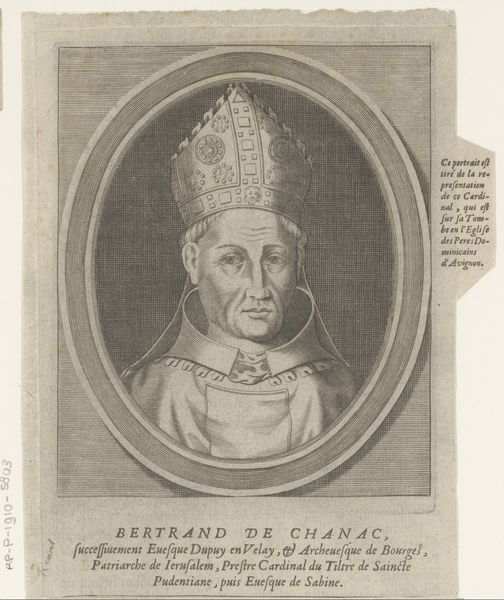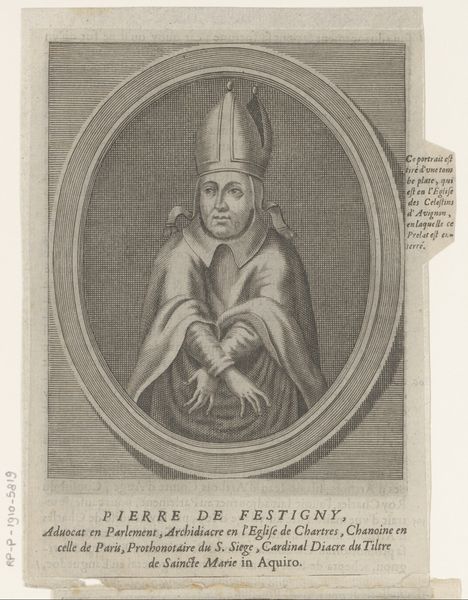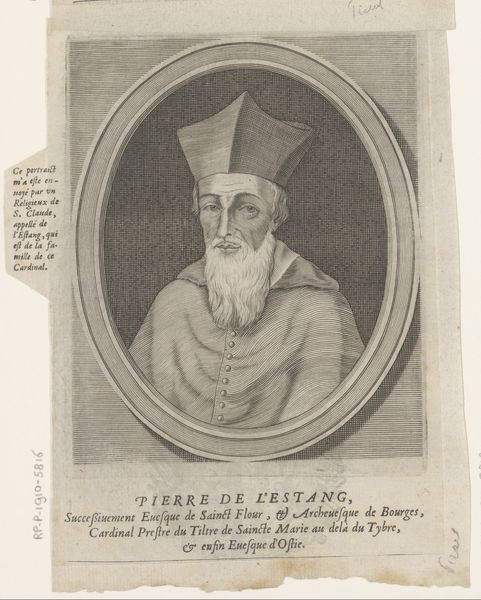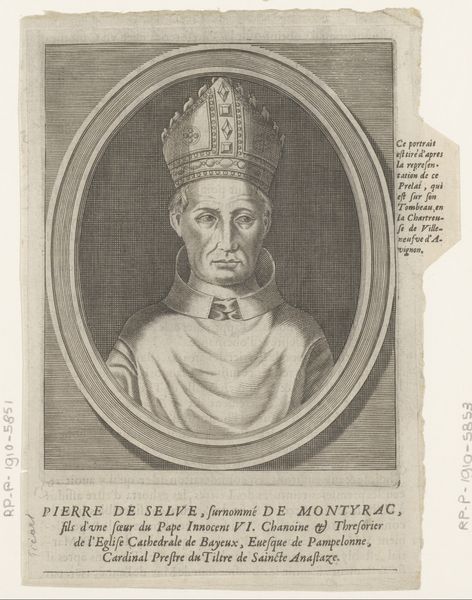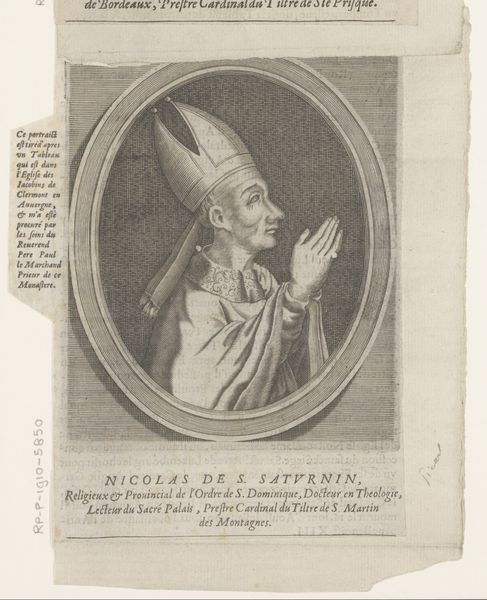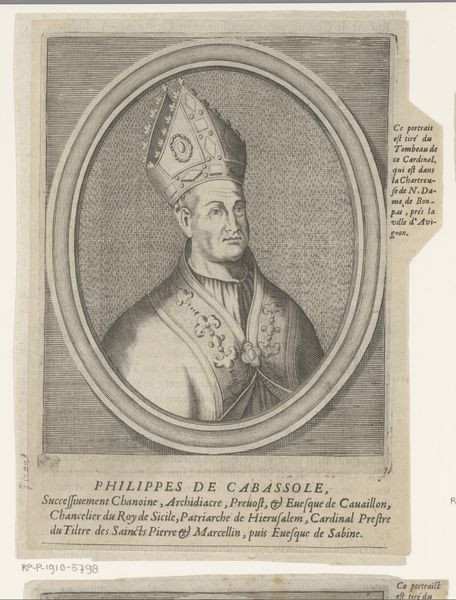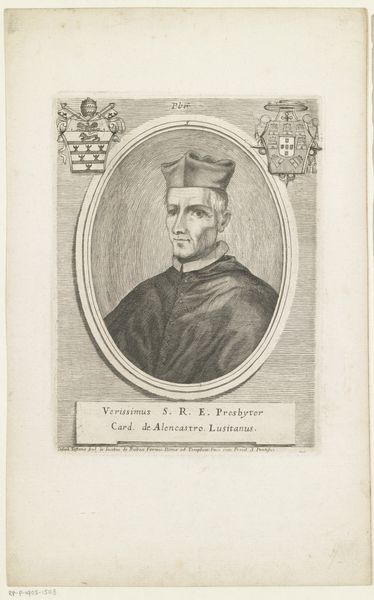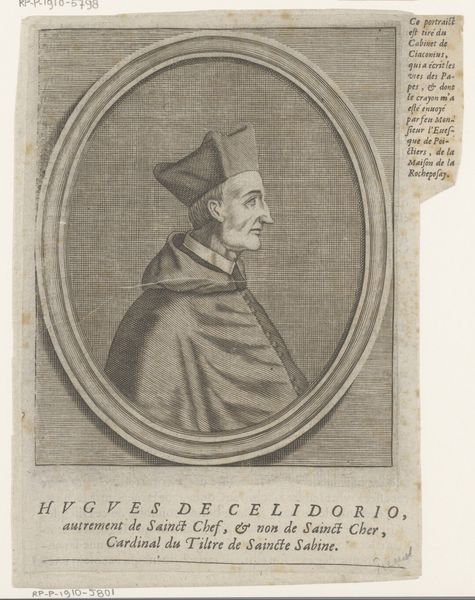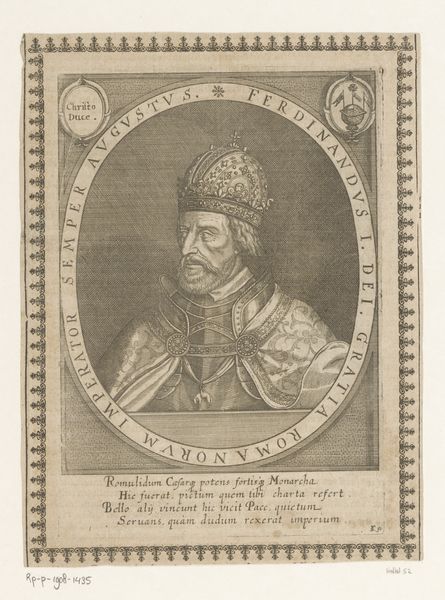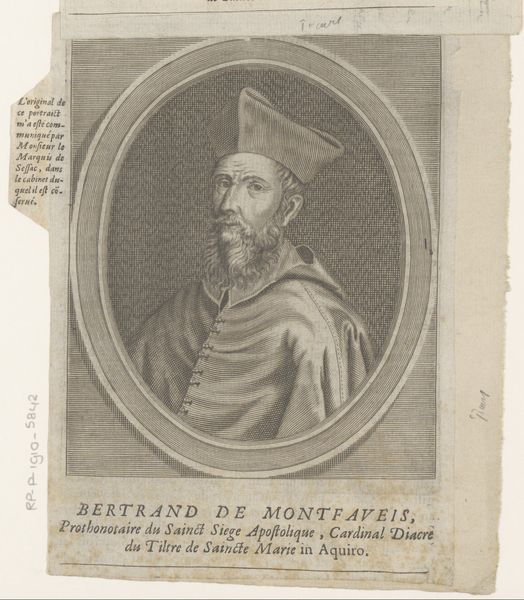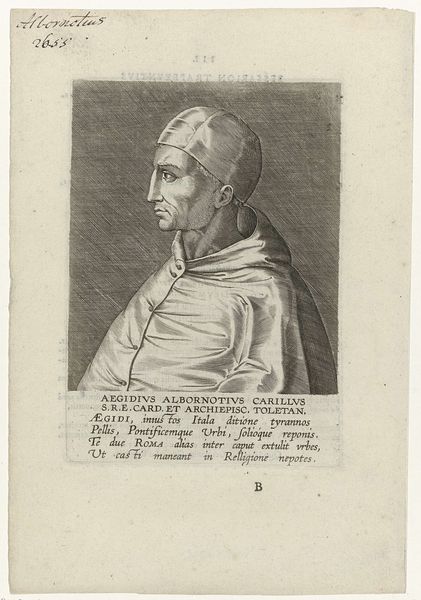
print, engraving
#
portrait
#
baroque
# print
#
old engraving style
#
engraving
Dimensions: height 176 mm, width 141 mm
Copyright: Rijks Museum: Open Domain
Editor: Here we have "Portrait of Bertrand de Deaux," an engraving by Etienne Picart, created in 1660. It’s quite striking! There’s something severe and almost austere about his expression and attire. What do you see in this piece, given its historical context? Curator: The engraving speaks volumes about the role of portraiture in solidifying power structures. Look at the way Deaux is presented: framed in an oval, inscription of his titles boldly displayed. It's not just a likeness, but a deliberate construction of identity, meant to broadcast his status as an Archeveque, Vice Chancelier, and Cardinal. Think about the function of images like this – where do you imagine they might have been displayed, and for whom? Editor: I'd guess places of authority – libraries, maybe even printed as a frontispiece in books? To project that authority to those coming into contact with them? Curator: Precisely! The Baroque era was keenly aware of the power of visual communication. This wasn't simply about recording what someone looked like; it was about manufacturing a public image. Notice how the fine lines of the engraving almost idealize his features, while simultaneously emphasizing the weight of his responsibilities. Consider how this image reinforces the institution he represents. What elements contribute to this feeling of institutional weight? Editor: Well, definitely his headdress and robes, and even his controlled, almost blank, expression – it feels very formal and deliberate, meant to command respect. The very clean, detailed engraving itself also feels imposing, in contrast with the simpler, looser artworks I am used to today. Curator: Exactly. The image performs a function; it's part of a system. Deaux becomes a representative of the Roman Catholic Church and its temporal power. Think about how these images were tools in the political landscape. Editor: So it’s about more than just art – it’s about the role this image played in reinforcing social hierarchies at the time? Curator: Precisely. And in examining this engraving, we’re uncovering that whole complex interplay between art, power, and society. Editor: That's a fantastic perspective; it makes me think about portraits completely differently. Curator: Indeed; and hopefully encourages thinking about the broader role of images today too!
Comments
No comments
Be the first to comment and join the conversation on the ultimate creative platform.
